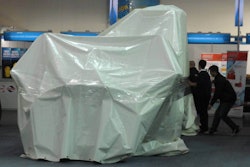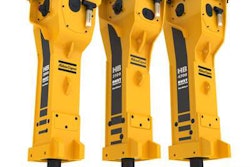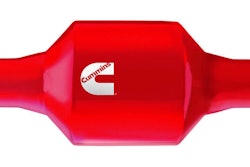Caterpillar Inc. today reported a first-quarter profit of $0.36 per share, up $0.55 per share from a loss of $0.19 per share in the first quarter of 2009. Excluding a tax charge of $90 million related to the recently signed U.S. health care legislation, profit in the first quarter of 2010 was $0.50 per share. The loss of $0.19 per share in the first quarter of 2009 included $558 million of employee redundancy costs.
Excluding redundancy costs, profit in the first quarter of 2009 was $0.39 per share. First-quarter sales and revenues of $8.238 billion were down from $9.225 billion in the first quarter of 2009.
“Economic conditions are definitely improving, particularly in the world’s developing economies,” said Chairman and CEO Jim Owens in the earnings statement. “Industry activity and orders are significantly higher than last year and are at record levels in some areas. As a result, we are hard at work ramping up production to meet increasing demand from customers,”
Owens said that despite the recession in 2009, Cat continued to invest in our facilities throughout the world, and those investments will position us for success as global growth continues.
“We are also seeing strong order activity related to mining and energy, and that should be very positive for our U.S. exports as the year unfolds,” Owens added.
First-quarter profit was $233 million compared with a loss of $112 million in the first quarter of 2009. The improvement in profit was a result of lower manufacturing costs, the absence of redundancy costs and favorable price realization. The improvements were partially offset by the impact of lower sales volume and higher taxes, including the $90 million charge related to the recently signed U.S. health care legislation.
“We are very encouraged by our performance in the first quarter. We focused on cost management and deployment of the Caterpillar Production System — factory efficiency improved, margins improved and our machinery business returned to profitability,” Owens said. “In addition, cash flow was positive, and we strengthened our balance sheet with continued improvement in our debt-to-capital ratio. As a result, we are well positioned to invest for growth where needed.”
Caterpillar is increasing its outlook for 2010 by raising the sales and revenues range and profit expectations.
For sales and revenues, the revised range is $38 billion to $42 billion. The revised 2010 profit outlook is a range of $2.50 to $3.25 per share.
“The main driver behind our improved outlook is robust growth in Asia/Pacific and Latin America and continued improvement in mining and energy globally,” Owens said. “We are increasing production schedules and expect sales to improve as we move through 2010. We remain highly focused on execution — the deployment of the Caterpillar Production System using 6 Sigma, tight cost management, efficiently ramping up production and preparing for Environmental Protection Agency (EPA) Tier 4 emission requirements. We expect to continue to add employees around the world to support growth and in the United States to support growing exports. We are confident in the ability of the entire Caterpillar team — our suppliers, employees and dealers — to work together to meet growing customer demand.”
Click here for a downloadable PDF of the Caterpillar first-quarter 2010 earnings statement.














